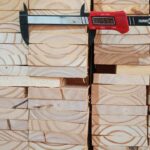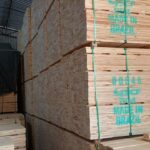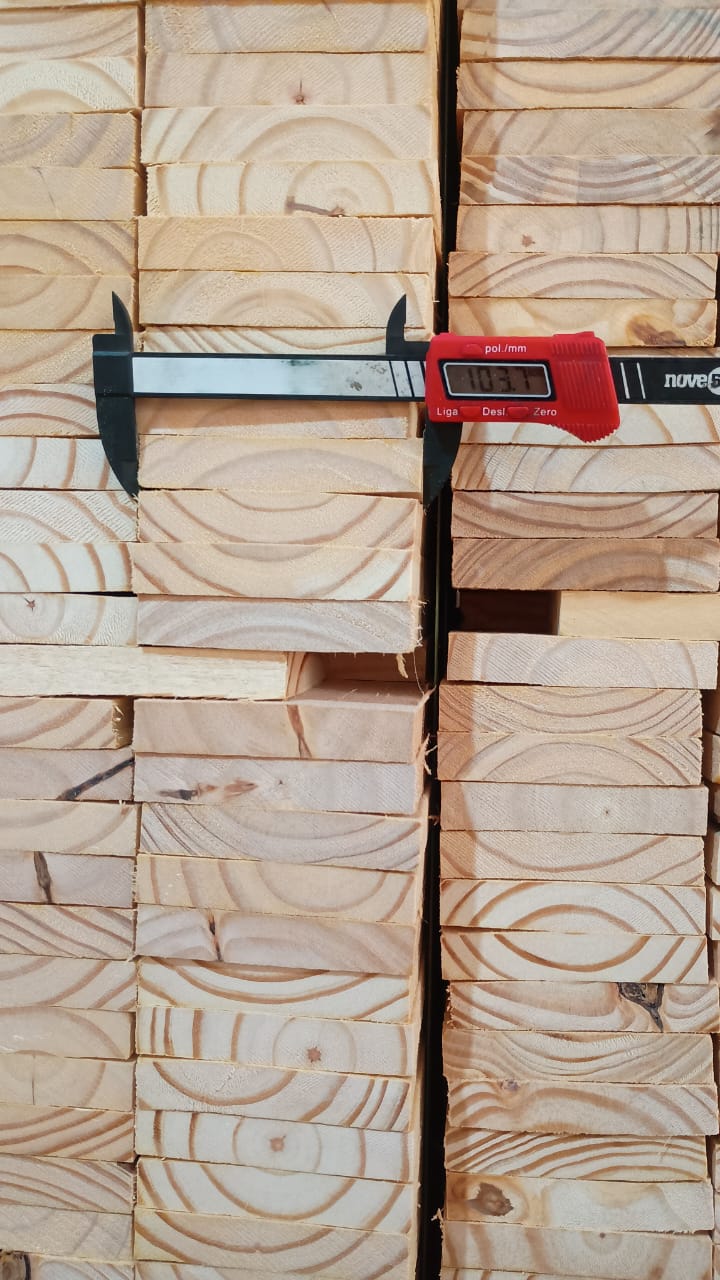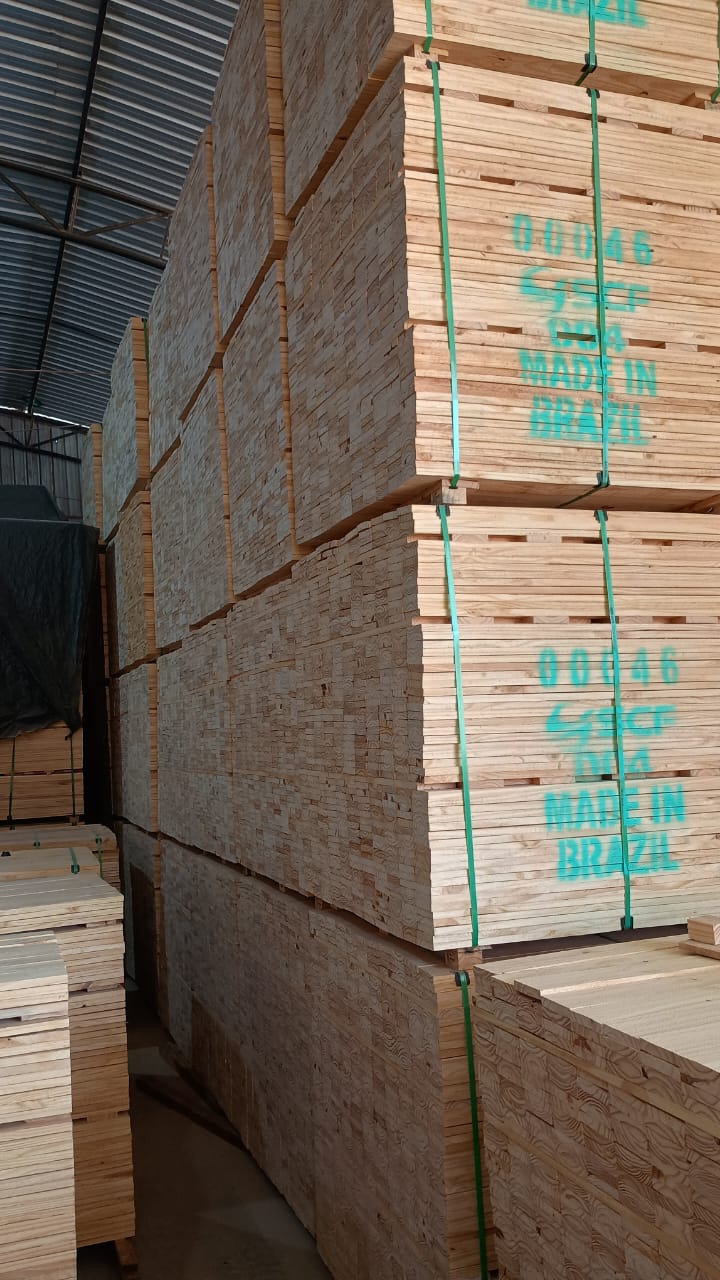The long-standing trade war between the United States and Canada over softwood lumber has flared up once again, ignited by the U.S. Department of Commerce's recent preliminary tariff plan on Canadian imports for 2023. The proposed significant increase in duties has triggered a predictable wave of discontent and strong rhetoric from Canadian authorities, coupled with concerns from U.S. homebuilders about rising costs. In this turbulent trade environment, a unique opportunity may arise for other softwood lumber exporters, particularly Brazil, to potentially increase their presence in the lucrative U.S. market.
The Shifting Sands of the North American Lumber Market
The U.S. market is a significant consumer of softwood lumber, heavily reliant on imports, with Canada traditionally being the dominant supplier. However, the recurring imposition of tariffs and the inherent instability of this trade relationship create vulnerabilities and opportunities for alternative sources. The proposed tariffs on Canadian lumber, citing alleged unfair subsidies and dumping practices, could lead to several consequences that might benefit Brazilian exporters:
- Increased Lumber Prices in the U.S.: The most immediate impact of higher tariffs on Canadian lumber would likely be an increase in prices for U.S. buyers. This price hike could make lumber from other regions, including Brazil, more competitive, even if they incur some existing duties or higher transportation costs.
- Supply Chain Diversification: U.S. homebuilders and other industries relying on softwood lumber may actively seek to diversify their supply chains to mitigate the risks associated with the volatile U.S.-Canada trade relationship. Brazil, with its established and growing forestry sector, could be seen as a viable alternative or supplementary source.
- Reduced Canadian Market Share: If the tariffs are implemented and sustained, Canadian lumber could become less attractive to U.S. buyers due to the increased cost. This could open a window for other exporters to capture a larger share of the U.S. market.
- Focus on Tariff-Free or Lower-Tariff Options: U.S. importers will be incentivized to explore sources of softwood lumber that face lower or no tariffs. Understanding the existing tariff structure for Brazilian softwood entering the U.S. will be crucial for Brazilian producers to capitalize on this situation.
Brazil's Position in the Global Softwood Market
Brazil has a significant and expanding forestry sector, with substantial production of both Eucalyptus and Pine species, the latter being directly relevant to the softwood lumber market. While traditionally focusing on other wood products like plywood and pulp, Brazil has been increasing its sawn wood exports, including pine, to various markets, including the United States.
Key aspects of Brazil's softwood lumber industry relevant to this opportunity:
- Growing Export Capacity: Brazil's investment in forestry and wood processing infrastructure has been increasing, leading to a greater capacity for export. Recent data indicates fluctuations in monthly export values but an overall trend of significant export volumes in wood-based products, including pine sawnwood.
- Sustainable Forestry Practices: Brazil has made strides in sustainable forest management, with a significant portion of its forestry plantations being certified. This can be an attractive factor for U.S. buyers increasingly conscious of environmental sourcing.
- Existing Trade Relationship with the U.S.: The U.S. is already a significant destination for Brazilian sawn wood exports. This existing trade infrastructure and established relationships can facilitate an increase in volume.
- Potential for Tariff Advantages: While the U.S. has, in the past, investigated or imposed tariffs on certain Brazilian wood products like plywood, the current focus is primarily on Canadian softwood lumber. Understanding the specific tariff codes and rates applicable to Brazilian pine sawnwood entering the U.S. now is critical. Some Brazilian wood products might even benefit from duty-free treatment under programs like the Generalized System of Preferences (GSP), although this needs careful verification for current softwood lumber classifications.
How Brazilian Softwood Can "Surf" This Trade War
To effectively capitalize on the U.S.-Canada softwood lumber dispute, Brazilian producers and exporters need to adopt a strategic approach:
- Thorough Market Analysis: Conduct a detailed analysis of the U.S. softwood lumber market, focusing on the specific types and grades of lumber facing the highest tariff increases from Canada. Identify niche markets or product segments where Brazilian pine can be a direct substitute.
- Competitive Pricing Strategy: While the tariffs on Canadian lumber might create a price umbrella, Brazilian exporters should aim for competitive pricing that offers value to U.S. buyers while ensuring profitability. Factors like transportation costs will need careful consideration.
- Focus on Quality and Reliability: To build long-term relationships with U.S. buyers, Brazilian producers must ensure consistent quality, adherence to U.S. standards, and reliable supply chains. Building trust and a reputation for dependability will be crucial.
- Strategic Marketing and Promotion: Actively market Brazilian softwood lumber to U.S. homebuilders, distributors, and other end-users. Highlight the potential for supply diversification, competitive pricing, and sustainable sourcing. Participation in U.S. industry events and trade shows can be beneficial.
- Understanding and Navigating U.S. Regulations: Brazilian exporters must have a comprehensive understanding of U.S. import regulations, quality standards, and any applicable tariffs. Engaging with customs brokers and trade consultants specializing in the U.S. market will be essential.
- Building Relationships with U.S. Importers: Establishing strong relationships with U.S.-based importers and distributors who have existing networks and market knowledge can significantly ease market entry and expansion.
- Potential for Joint Ventures or Partnerships: Exploring joint ventures or partnerships with U.S. lumber companies or distributors could provide valuable market access and insights.
- Advocacy and Government Support: The Brazilian government and industry associations can play a role in supporting market access efforts by engaging with U.S. counterparts and highlighting the benefits of diversifying lumber imports.
Challenges and Considerations for Brazil
While the U.S.-Canada dispute presents an opportunity, Brazilian exporters will also face challenges:
- Transportation Costs: Shipping lumber from Brazil to the U.S. can be more expensive than transporting it from Canada, especially to certain regions. Optimizing logistics and exploring different shipping options will be crucial.
- Existing U.S. Tariffs on Brazilian Wood Products: While softwood lumber might not be the primary target now, Brazilian exporters need to be aware of any existing U.S. tariffs on other wood products that could potentially be expanded or serve as a precedent.
- Competition from Other Exporters: Brazil is not the only country that could see this as an opportunity. European nations and other softwood producers may also try to increase their exports to the U.S. market.
- Meeting U.S. Quality Standards and Specifications: The U.S. market has specific quality standards and grading rules for softwood lumber. Brazilian producers must ensure their products meet these requirements.
- Potential for Future Trade Actions: The U.S. trade policy can be unpredictable. Brazil needs to be prepared for potential future trade actions that could impact its lumber exports.
Conclusion: A Window of Opportunity
The renewed trade tensions between the U.S. and Canada over softwood lumber have created a dynamic and potentially advantageous situation for alternative suppliers. Brazil, with its growing forestry sector and increasing export capacity, stands to benefit from the potential price increases and the U.S.'s need for supply diversification. By strategically focusing on market analysis, competitive pricing, quality assurance, and effective market entry strategies, Brazilian softwood lumber producers can navigate the waves of this trade war and potentially establish a stronger and more significant presence in the crucial U.S. market, ultimately contributing to a more diversified and resilient North American lumber supply chain. The time is ripe for Brazilian exporters to seize this opportunity and demonstrate their capability to be a reliable and competitive source of softwood lumber for the United States.












